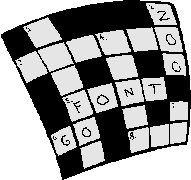|
LIFE SCIENCE |
Chapter 17
Vocabulary
_______________ - striated, involuntary muscle found only in the heart.
_______________ muscle, such as heart muscle, that cannot be consciously controlled.
_______________ tough band of tissue that holds bones together at joints.
_______________ all the bones in the body; forms an internal, living framework that provides shape and support, protects internal organs, moves bones, forms blood cells, and store calcium and phosphorus compounds for later use.
_______________ any place where two or more bones come together, can be movable or immovable
_______________ involuntary, nonstriated muscle that controls movement of internal organs.
_______________ outer, thinnest skin layer that constantly produces new cells to replace the dead cells rubbed off its surface.
_______________ voluntary, striated muscle that moves bones, works in pairs, and is attached to bones by tendons
_______________ muscle, such as a leg or arm muscle, that can be consciously controlled.
_______________ - skim layer below the epidermis that contains blood vessels, nerves, oil and sweat glands, and other structures.
_______________ organ that can relax, contract, and provide the force to move bones and body parts.
_______________ thick band of tissue that attaches bones
to muscles.
______________ tough, tight-fitting membrane that covers a bones surface and
contains blood vessels that transport nutrients into the bone.
_______________ - pigment produced by the epidermis that protects skin from sun damage and gives skin and eyes their color.
_______________ tough, flexible tissue that joins vertebrate and makes up all or part of the vertebrate endoskeleton; in humans, thick, smooth, flexible, and slippery tissue layer that covers the ends of bones, makes movement easier by reducing friction, and absorbs shocks.
